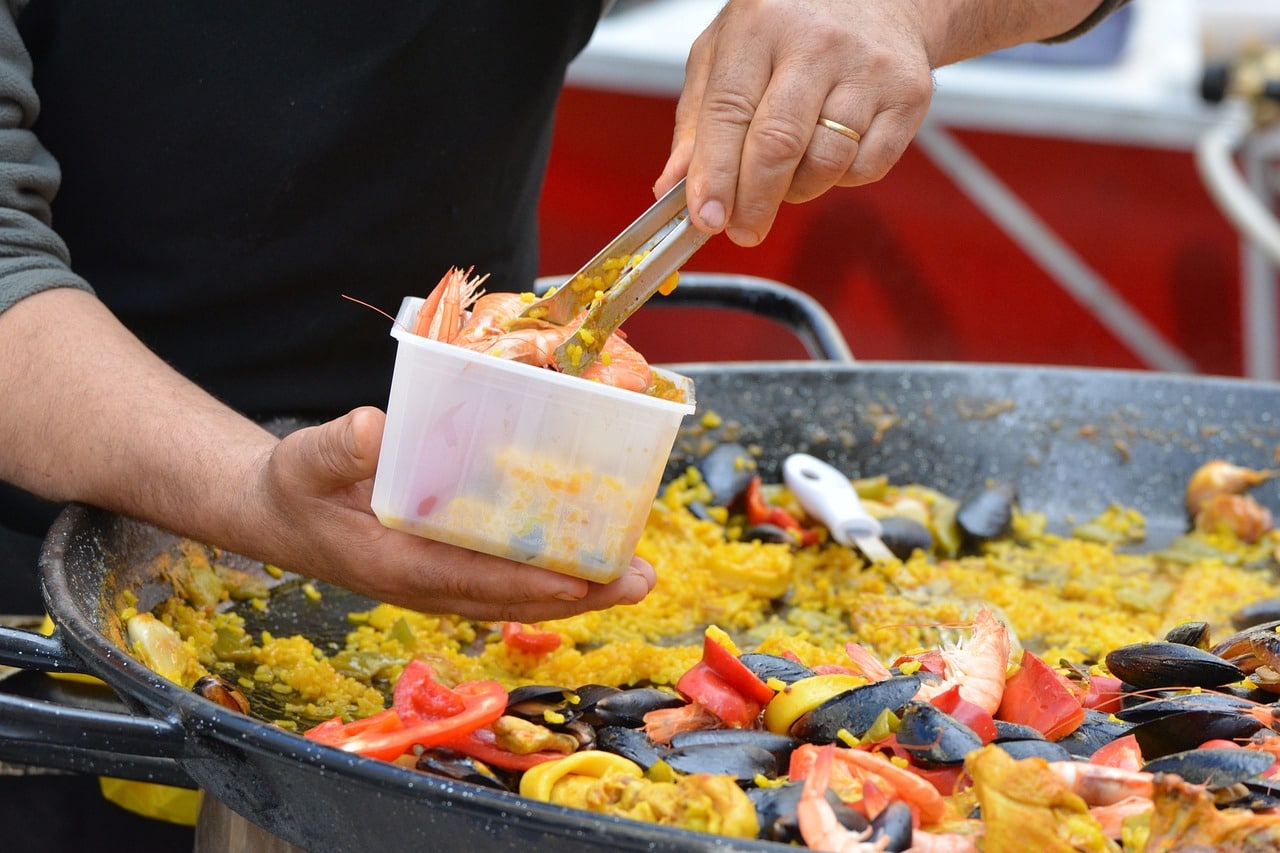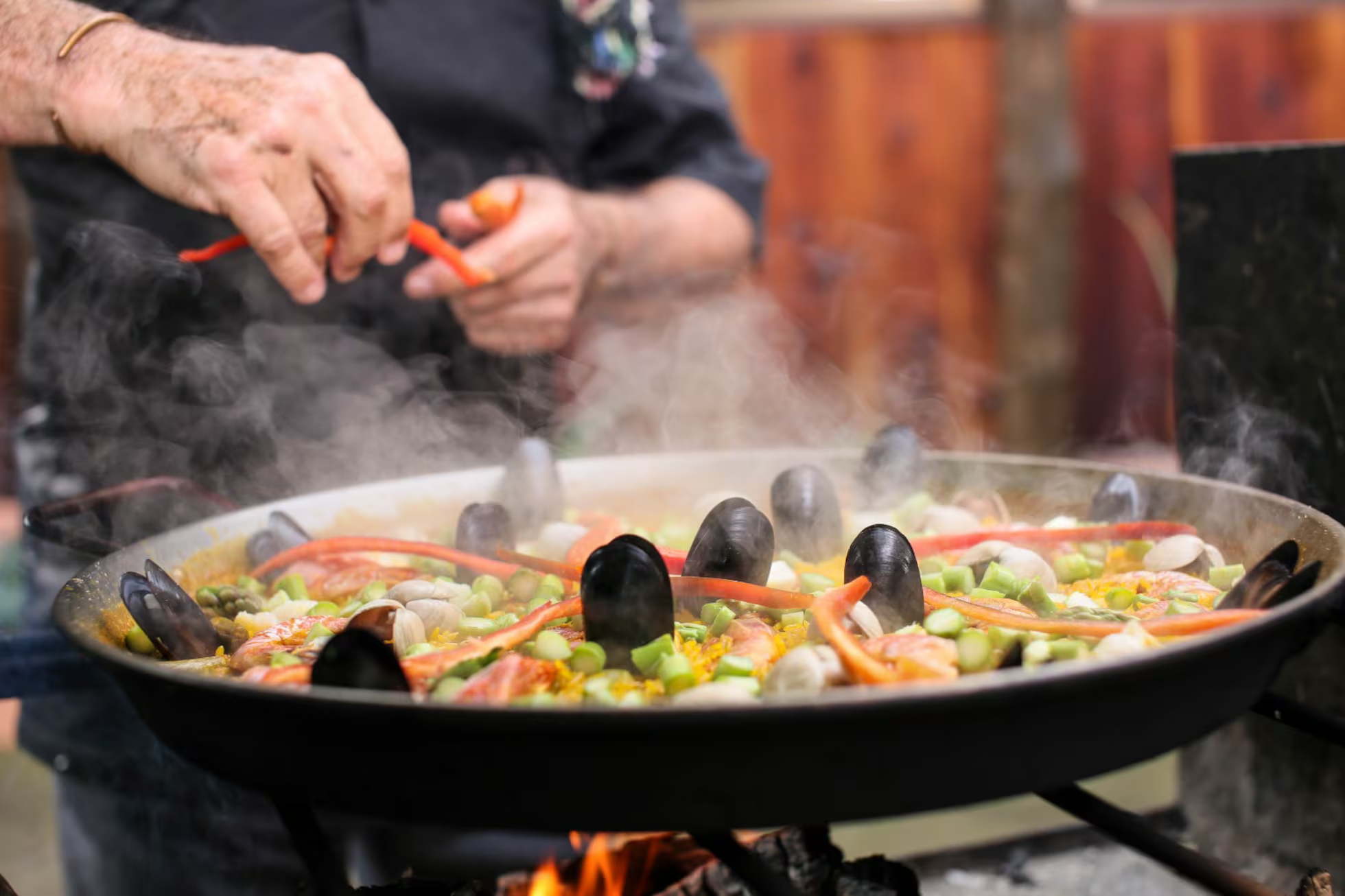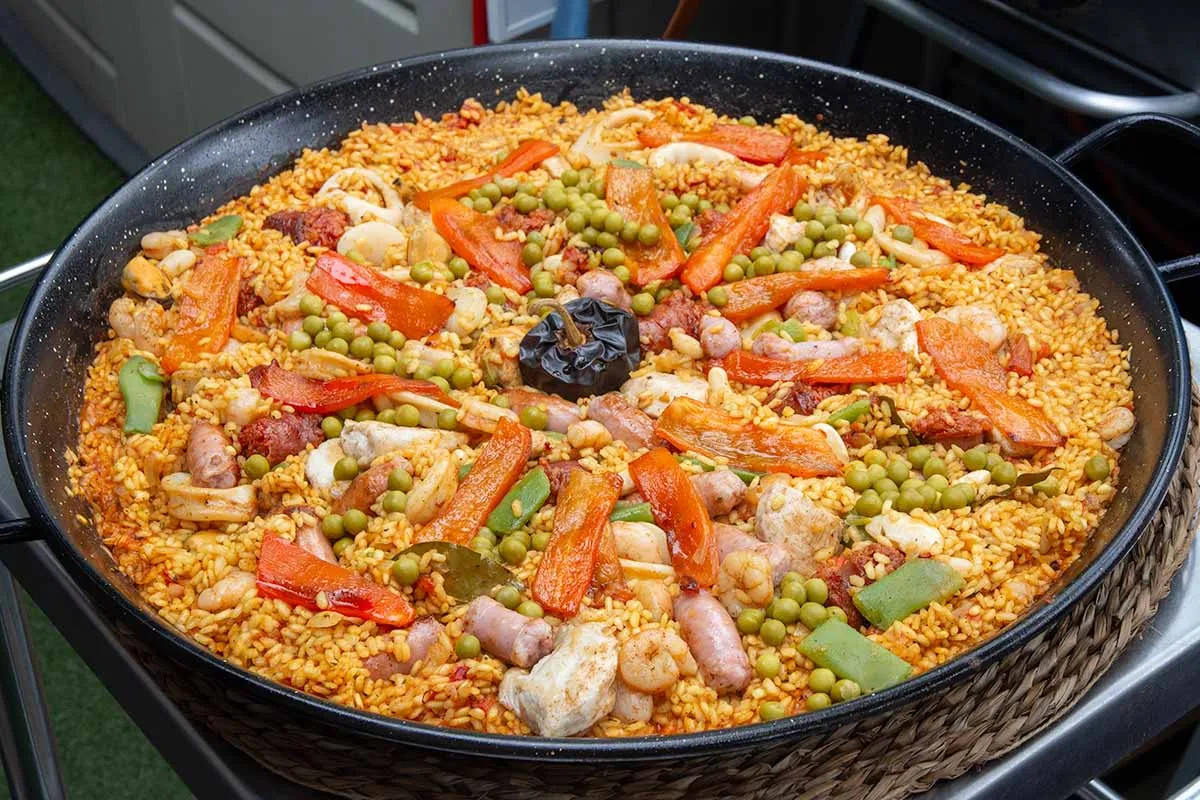What Is the Most Popular Food in Spain? Exploring Iconic Dishes and Spanish Culinary Traditions
When I think about Spain, the first thing that comes to mind is its incredible food scene. Spanish cuisine is a celebration of bold flavors, fresh ingredients and centuries-old traditions that bring people together around the table. Every region has its own specialties but some dishes have captured the hearts—and taste buds—of locals and visitors alike.
I’ve always been fascinated by the way food reflects a country’s culture and Spain is no exception. From bustling city markets to cozy village tapas bars there’s one dish that stands out above the rest. If you’re curious about what truly defines Spanish food and which meal tops the list as the nation’s favorite, you’re in the right place.
Understanding Spanish Cuisine

Understanding-Spanish-Cuisine
Spanish cuisine combines distinct regional traditions and ingredients. I see over 17 autonomous communities, each shaping local food culture. Coastal regions like Galicia, for example, focus on seafood including octopus and clams. Inland regions such as Castilla y León rely on roasted meats and stews.
Core elements anchor Spanish cuisine across all regions. Olive oil, garlic, and tomatoes feature in popular dishes like gazpacho and sofrito. Pork takes center stage in many specialties—examples include jamón ibérico and chorizo.
Mealtime customs drive the Spanish dining experience. Lunch serves as the main meal, often stretching across several courses. Tapas, which are small shared plates, line tables during both lunch and dinner, encouraging conversation and variety.
I notice how seasonal produce, fresh seafood, and traditional cooking techniques define authenticity. Culinary festivals and family celebrations reinforce recipes that have passed through generations, emphasizing the communal essence. Spanish cuisine thrives on simplicity, natural flavors, and the connection between food and regional identity.
Exploring the Most Popular Food in Spain
Spanish food draws on centuries of tradition, shaped by regional ingredients and communal customs. I notice that dishes like paella and tapas create a dining experience built around sharing and seasonality.
The Role of Tapas
Tapas anchor Spanish culinary culture through a tradition of sharing small plates. I find that common tapas, including pincho de tortilla, patatas bravas, and jamón serrano, show the national preference for fresh, local fare. Tapas often feature Manchego cheese, boquerones en vinagre, or spicy chorizo, giving each region room to highlight its specialties. Tapas bars encourage social dining, transforming even casual meals into festive gatherings.
Iconic Spanish Dishes
Paella ranks as the most popular Spanish dish and, in its Valencian form, consists of rice, saffron, rabbit, chicken, and butter beans. International versions substitute or add mussels, prawns, and chorizo. I see paella as symbolic of family celebrations and large group meals throughout Spain. Tortilla de patatas, or Spanish omelette, follows closely as a staple eaten at any time of day. Typical ingredients include potatoes, eggs, and olive oil, with onions as a frequent variation. Many consider gazpacho essential during the summer, with its tomatoes and olive oil delivering a refreshing flavor. Iconic meatballs, or albondigas, feature on many menus, often served in spicy tomato sauces. Olive oil connects each dish, underpinning flavor profiles and asserting its place as a cornerstone of Spanish cuisine.
Spotlight on Paella: Spain’s Culinary Crown Jewel

Spotlight-on-Paella_Spain’s-Culinary-Crown-Jewel
Paella claims status as Spain’s culinary icon, instantly recognized by food enthusiasts around the world. I find that no other Spanish dish captures such a blend of tradition, flavor, and festive spirit.
Origins and Variations of Paella
Paella originated in the rice fields surrounding Valencia, first prepared as a rustic meal by local farmers. Early versions used accessible ingredients like rabbit, chicken, and butter beans. As paella’s fame grew across Spain by the late 18th century, it evolved with regional preferences. Coastal Valencians introduced seafood, seen in the popular paella de mariscos with mussels and prawns. In urban centers, cooks created the paella mixta—meat and seafood combined, which became the version most recognized internationally. The dish’s name comes from the unique wide pan (paellera) used for cooking, with the Latin root “patella” meaning “pan.”
Why Paella Stands Out
Paella’s appeal extends beyond its ingredients; preparation and sharing form a ritual during family gatherings, festivals, or Sunday meals. I see how the signature scent of saffron and the interplay of rice, protein, and local vegetables make each serving both distinctive and adaptable. For Spaniards, paella reflects cultural diversity, connecting regions and generations through a shared culinary language. Unlike tortilla de patatas or gazpacho, paella carries unparalleled symbolic weight as Spain’s gastronomic ambassador.
Other Contenders for Spain’s Most Popular Food
Spain’s most beloved foods represent both tradition and regional diversity. Paella stands out, yet several contenders also hold iconic status nationwide.
Gazpacho and Salmorejo
Gazpacho and Salmorejo rank among the most recognizable Spanish cold soups. Gazpacho, native to Andalusia, includes tomatoes, cucumbers, bell peppers, olive oil, and vinegar. It’s enjoyed chilled during hot months across the country. Salmorejo, originating in Córdoba, takes a thicker, creamier form. Its creamy texture comes from incorporating more bread and olive oil, and it’s topped with chopped Jamón Ibérico and hard-boiled eggs. Both soups highlight seasonal vegetables and olive oil, underscoring the Mediterranean roots of Spanish cuisine.
Jamón Ibérico
Jamón Ibérico sits atop Spain’s food hierarchy. Produced from acorn-fed Iberian pigs, it’s cured for up to four years, yielding a delicate, nutty flavor. People across regions eat it thinly sliced as a tapa or part of traditional celebrations. Its artisanship and ties to Spanish gastronomy make it a culinary symbol, frequently gifted and celebrated during holidays and festivals.
Tortilla Española
Tortilla Española’s simplicity draws admiration. Consisting of eggs, potatoes, and onions, it appears everywhere from home kitchens to busy tapas bars. Recipes vary, but the core concept remains unchanged and widely accepted as a comfort food. Whether served as a pincho or a meal centerpiece, the dish epitomizes Spanish home cooking and the importance of humble ingredients in everyday cuisine.
The Influence of Regional Specialties

The-Influence-of-Regional-Specialties
Regional specialties shape which foods become the most popular in Spain. Each autonomous community crafts iconic dishes influenced by geography, climate, and cultural heritage. In Valencia, for example, I find paella as the signature food, traditionally featuring saffron rice, rabbit, chicken, and butter beans, though seafood versions with mussels and prawns appear on many coastal menus.
Northern Spain, including Galicia and the Basque Country, emphasizes seafood and fish-based dishes. I often see pulpo a la gallega, which is octopus with paprika and olive oil, and bacalao al pil pil, a cod dish, as regional favorites. Inland communities like Castilla y León rely on roasted meats, with specialties such as roast suckling pig and robust stews that use local pork, lamb, and vegetables.
In Andalusia, the heat influences refreshing recipes like gazpacho and salmorejo. These cold soups depend on ripe tomatoes, olive oil, and garlic, reflecting the region’s agricultural strengths. Throughout Spain, tapas reflect regional character—boquerones en vinagre (marinated anchovies) in the south and tortilla de patatas in the north.
Cheeses such as Manchego from La Mancha and cured hams like jamón ibérico from Extremadura also illustrate how local ingredients define Spanish food identity. While paella remains the most internationally recognized Spanish dish, popular foods throughout Spain owe their fame to unique regional flavors, preparation techniques, and ingredient traditions.
Conclusion
Exploring Spain’s most popular foods has deepened my appreciation for the country’s vibrant culinary landscape. Every region offers something unique and every dish tells a story about its people and their way of life.
Spanish cuisine isn’t just about ingredients or recipes—it’s a living tradition that brings families and friends together around the table. Whether I’m savoring paella in Valencia or sharing tapas in a bustling Madrid bar I’m reminded that the true flavor of Spain lies in its sense of community and celebration.
Frequently Asked Questions
What makes Spanish cuisine unique?
Spanish cuisine stands out for its bold flavors, fresh, local ingredients, and diverse regional influences. Each of Spain’s 17 autonomous communities has its own food traditions, resulting in a wide variety of dishes, cooking techniques, and local specialties.
What are the most iconic Spanish dishes?
Some of the most iconic Spanish dishes include paella, tortilla española (Spanish omelet), gazpacho, jamón ibérico (cured ham), chorizo, and a range of tapas like patatas bravas and pincho de tortilla.
Why is paella considered Spain’s signature dish?
Paella is regarded as Spain’s signature dish due to its historical roots in Valencia, combination of local ingredients, and the communal spirit it embodies. It is often shared at family gatherings and festivals, reinforcing its cultural significance.
What is the difference between gazpacho and salmorejo?
Gazpacho is a refreshing cold soup from Andalusia, made primarily from tomatoes, cucumber, and peppers. Salmorejo, from Córdoba, is creamier and thicker, containing more bread, tomatoes, garlic, and olive oil.
How do mealtime customs in Spain differ from other countries?
In Spain, lunch is typically the main meal and is eaten later in the day, usually around 2–3 p.m. Meals are seen as social occasions, often featuring multiple courses and shared tapas to encourage communal dining.
Are Spanish dishes always spicy?
No, most Spanish dishes highlight natural flavors of fresh ingredients rather than heavy spices. Seasonings like olive oil, garlic, and paprika are common, but extreme spiciness is rare in traditional Spanish cooking.
What are regional specialties in Spanish cuisine?
Each region has its specialties: Galicia is known for seafood, Castilla y León for roasted meats and stews, Valencia for paella, and Andalusia for cold soups like gazpacho. Local cheeses and cured hams also vary widely by region.
Why is olive oil so important in Spanish cooking?
Olive oil is a staple in Spanish cuisine, used for cooking, dressing, and flavoring dishes. Its quality and flavor unify many recipes, making it essential to both everyday meals and festive specialties.
How do tapas fit into Spanish food culture?
Tapas are small plates meant for sharing and are central to Spain’s communal dining tradition. They encourage socializing and let diners sample a variety of flavors and dishes in one meal.
What role does communal dining play in Spanish cuisine?
Communal dining is at the heart of Spanish food culture. Shared meals, especially with family and friends, reinforce bonds and emphasize the importance of togetherness, especially during festivals and celebrations.
